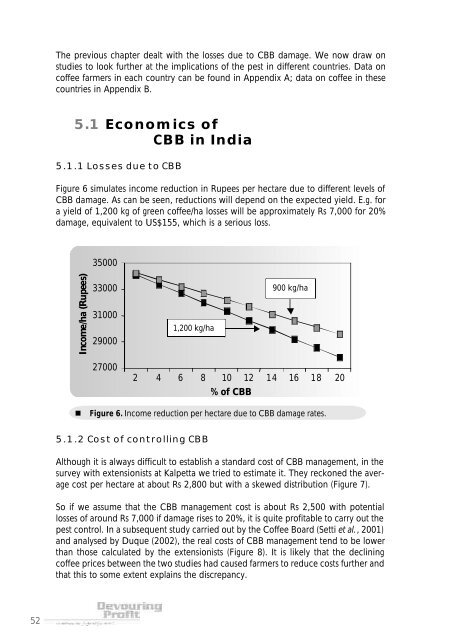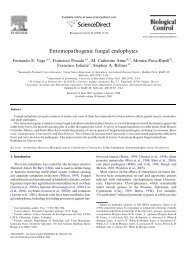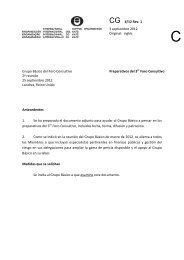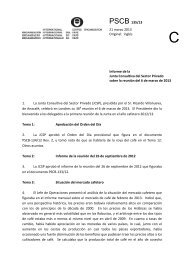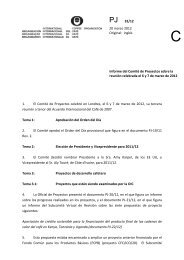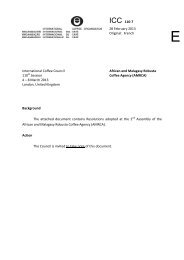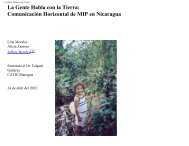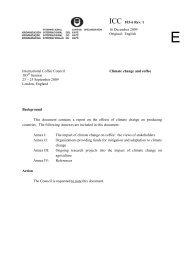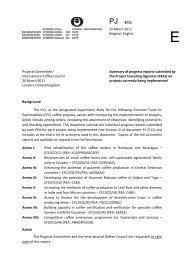Devouring profit - International Coffee Organization
Devouring profit - International Coffee Organization
Devouring profit - International Coffee Organization
You also want an ePaper? Increase the reach of your titles
YUMPU automatically turns print PDFs into web optimized ePapers that Google loves.
52<br />
The previous chapter dealt with the losses due to CBB damage. We now draw on<br />
studies to look further at the implications of the pest in different countries. Data on<br />
coffee farmers in each country can be found in Appendix A; data on coffee in these<br />
countries in Appendix B.<br />
5.1 Economics of<br />
CBB in India<br />
5.1.1 Losses due to CBB<br />
Figure 6 simulates income reduction in Rupees per hectare due to different levels of<br />
CBB damage. As can be seen, reductions will depend on the expected yield. E.g. for<br />
a yield of 1,200 kg of green coffee/ha losses will be approximately Rs 7,000 for 20%<br />
damage, equivalent to US$155, which is a serious loss.<br />
Income/ha (Rupees)<br />
35000<br />
33000<br />
31000<br />
29000<br />
27000<br />
1,200 kg/ha<br />
2 4 6 8 10 12 14 16 18 20<br />
% of CBB<br />
900 kg/ha<br />
Figure 6. Income reduction per hectare due to CBB damage rates.<br />
5.1.2 Cost of controlling CBB<br />
Although it is always difficult to establish a standard cost of CBB management, in the<br />
survey with extensionists at Kalpetta we tried to estimate it. They reckoned the average<br />
cost per hectare at about Rs 2,800 but with a skewed distribution (Figure 7).<br />
So if we assume that the CBB management cost is about Rs 2,500 with potential<br />
losses of around Rs 7,000 if damage rises to 20%, it is quite <strong>profit</strong>able to carry out the<br />
pest control. In a subsequent study carried out by the <strong>Coffee</strong> Board (Setti et al., 2001)<br />
and analysed by Duque (2002), the real costs of CBB management tend to be lower<br />
than those calculated by the extensionists (Figure 8). It is likely that the declining<br />
coffee prices between the two studies had caused farmers to reduce costs further and<br />
that this to some extent explains the discrepancy.


